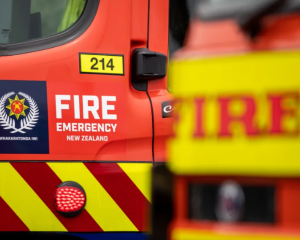Various proposals to reintroduce cable cars to Dunedin's hill streets have been floated over the decades since services were discontinued, and some have been taken as far as feasibility studies.
All have foundered on the rock of costs.
Two proposals are now before the city for consideration and support, one by the Dunedin Cable Car Trust on a 1.5km route linking the Exchange and Mornington; the other on a route from the railway station, through the Octagon and up Stuart St.
Each has been subject to a preliminary feasibility study, and each has been shown to have questionable economic viability.
No-one should be surprised by this outcome.
The installation of a cable car system on either High St or Stuart St would be a colossal and disruptive undertaking and the capital expense involved very high.
One estimate of the High St proposal mentioned $19 million, and the revenues likely to be derived from such a facility over 12 months, year-in year-out, would have to be considerable to justify it.
The idea of a cable car is a romantic notion with little to commend it.
The advocacy of such a facility needs to be leavened with much more level-headed pragmatism than enthusiasm.
In history resides a lesson: the city council in 1945 - when the Dunedin public transport system provided 30 million passenger rides a year - found the electric trams and cable cars were no longer economic and recommended they be replaced by buses.
The last cable car to Mornington made its journey on March 2, 1957.
Cable cars, it needs to be remembered, replaced horse-drawn trams on the hills and were an excellent answer for the times to the problem of getting pedestrian traffic to the upper suburbs.
One of the aspects of the city that impresses tourists is its Victorian character, and a working cable car carrying visitors to suitable viewing locations, when coupled with the successful Otago Excursion Train, would probably offer an enhanced marketable experience.
But it would be a facility largely used by tourists; it is very doubtful whether locals would treat a cable car as once they did - long before the advent of a private motorcar for every home - let alone prefer it to buses.
That must count against the financial viability of a cable car.
One factor that might improve the chances would be to ensure a cable car actually had a purposeful destination, such as Moana Pool or the Otago Museum.
Another would be to operate a cable car on a seasonal or irregular basis, such as the excursion trains occasionally operate from Dunedin.
In this regard, a cable car could function on the days of cruise ship visits, or on public holidays and during the peak period of tourist visitors to the city.
That would still likely make it quite uneconomic on a commercial, private-ownership basis, but it might be feasible were it to be staffed by a group of volunteers.
It still implies a heavy subsidy and the only likely source would be Dunedin's already hard-pressed ratepayers.
It may be that, ultimately, the best location options for a tourist-focused cable car or alternatives might not be High St or Stuart St but the Octagon-Lower Stuart St-railway station area, or a link from the railway station to the Botanic Garden through or past the university and stadium.
There may be merit in these routes when the long-term waterfront development is also taken into account.
The alternative of a tram or light rail rather than a cable car might be more attractive, since modern trams do not need overhead wiring or electrified rails.
On the other hand, should Dunedin be even contemplating copying Wellington's cable car or Christchurch's tram?
Both centres have far larger resident populations and far higher numbers of visitors.
Dunedin's city council is correct to encourage cable car enthusiasts, and to require more detailed economic studies.
But it should not limit other innovative and imaginative ideas particular to the city's location and its heritage to attract visitors.
Eight years ago, a city council report said installing a tram system could cost $2.5 million a kilometre - that is what it cost to install the Christchurch tram system, excluding the cost of carriages.
At that time, enthusiasts were urging the council to create a tram link between the railway station and the Settlers Museum, a distance of about 300m, with later extensions up Stuart St to the Octagon and along George St to the university.
On the other hand, the report said a modern light rail system would be much cheaper, at about $600,000 a kilometre.
That is well worth exploring further, with consideration looking ahead to actual transport needs, and relying on realism rather than nostalgia.












